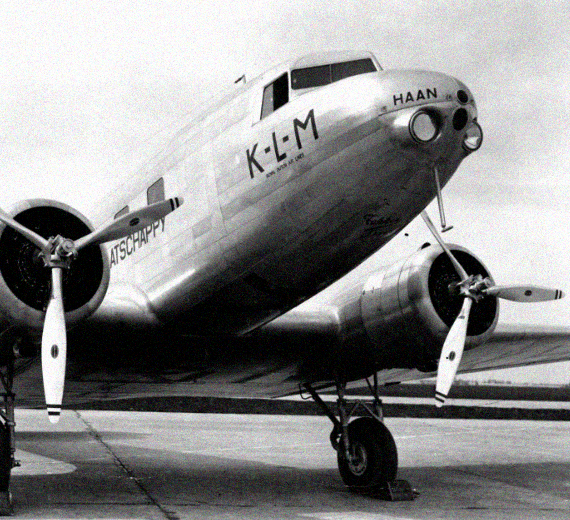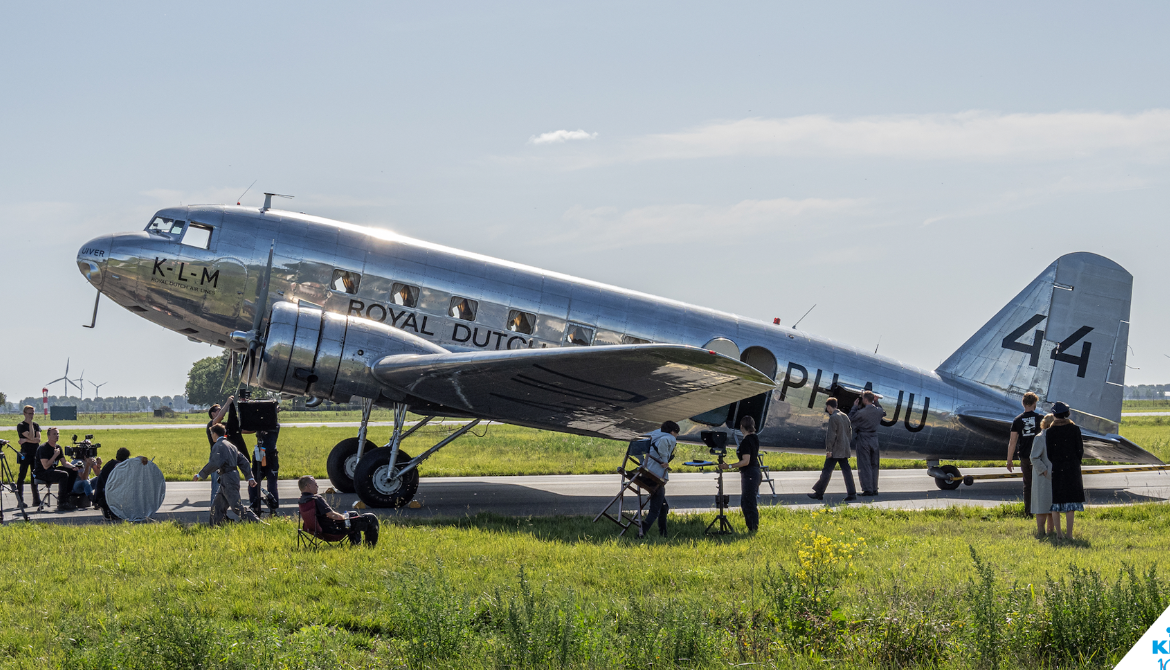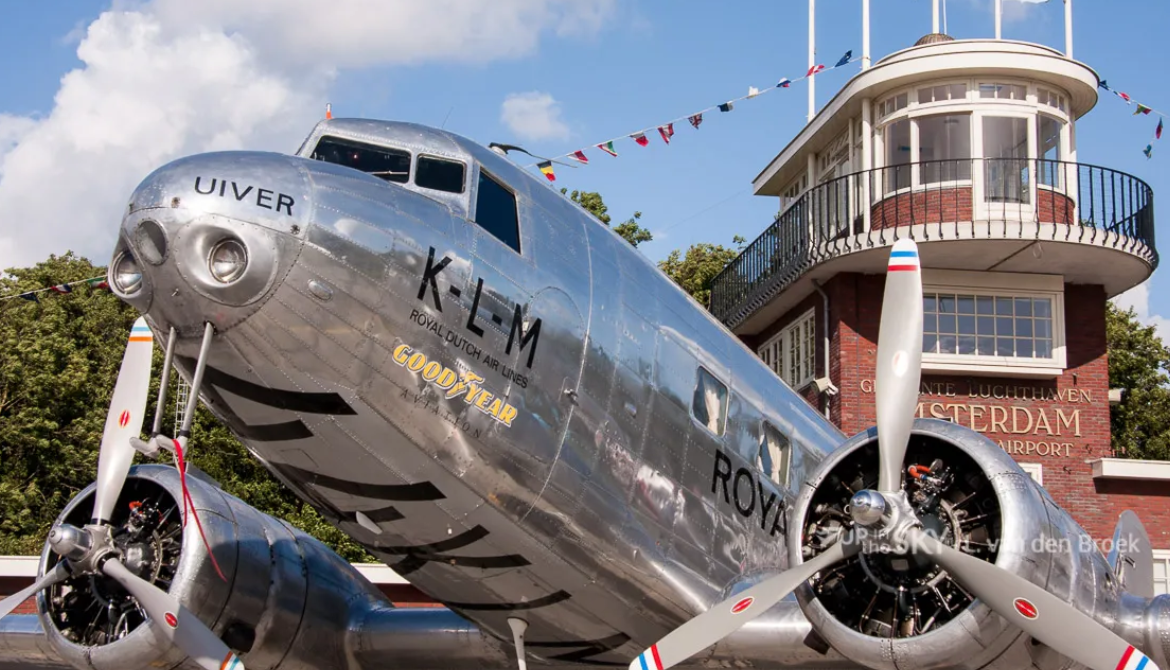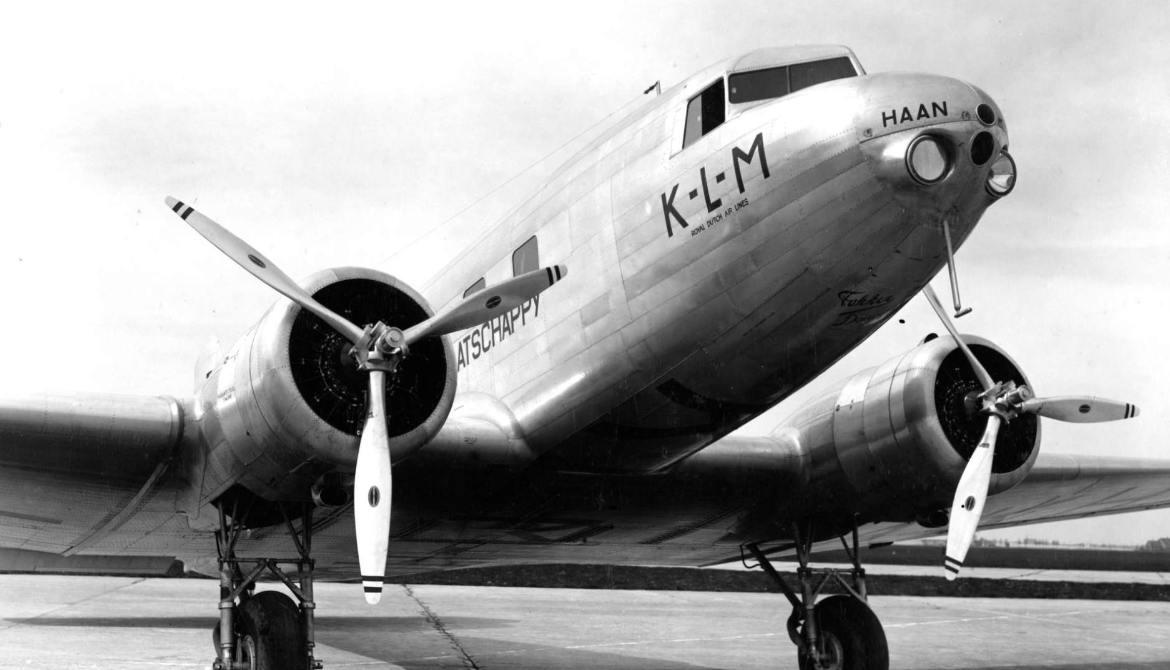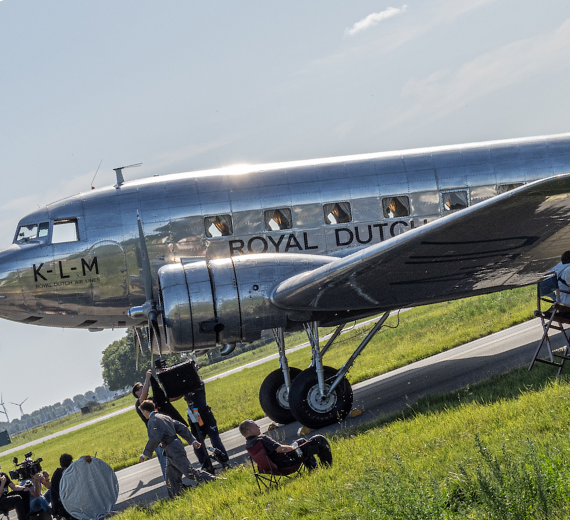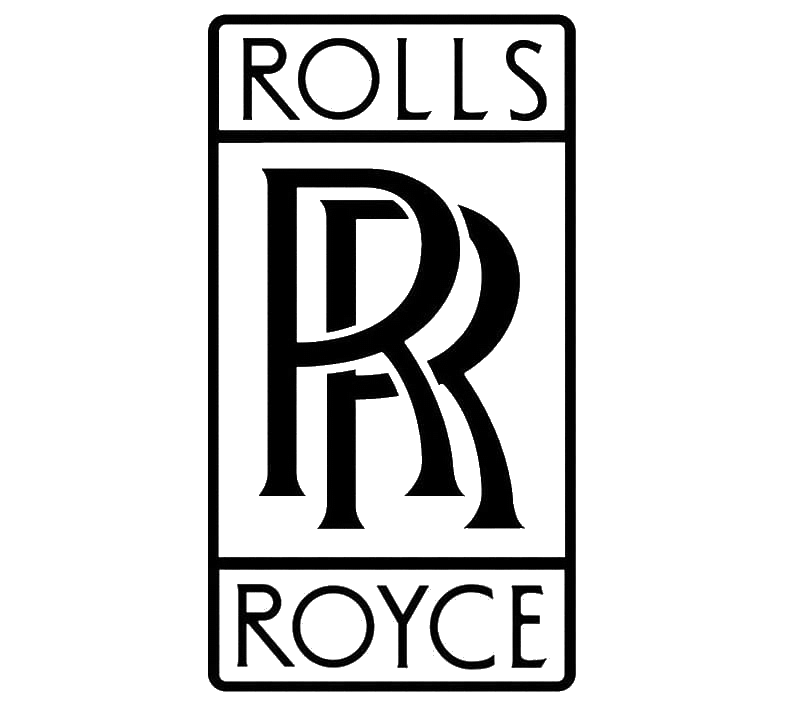Douglas
DC-2 de Uiver
Role Passenger & military transport
Manufacturer Douglas Aircraft Company
First flight May 11, 1934
Introduction May 18, 1934, with Trans World Airlines
Status Retired
Primary users Transcontinental & Western Air (TWA)
KLMPan American Airways
Produced 1934–1939
Number built 198
Developed from Douglas DC-1
Developed into Douglas B-18 BoloDouglas DC-3
.
History
DC-2 de Uiver

Uiver is the Douglas DC-2 aircraft with registration PH-AJU of the Dutch airline KLM. It became a celebrity in 1934, both in the Netherlands and internationally, by winning the Melbourne race, but was lost in an air disaster the same year.
KLM named its aircraft after birds whose first letter matched the last letter of the registration mark. Thus the PH-AIP was called Pelican and the PH-AJA Eagle. Even birds that cannot fly were named, such as the Rooster and the Nandu. The aircraft PH-AJU was a problem because there was already a machine named Owl and there was no other bird name in standard Dutch with a U, until someone came up with the idea that a stork is called Uiver in the Betuwe dialect.
Translated with www.DeepL.com/Translator (free version)
The first Douglas DC-2 was ordered by KLM on March 28, 1934. The Uiver was of the model DC-2-115A and was built in the summer of 1934 as the eighteenth DC-2 by the Douglas Aircraft Company in Santa Monica, California, in the United States. After acceptance, the aircraft was flown to New York on August 22, 1934, where it was partially disassembled for transport to Rotterdam aboard the Statendam. The ship arrived there on September 13, 1934. The machine was transferred to Rotterdam's Waalhaven airfield. After assembly by the KLM Technical Department, the aircraft made its first flight over Dutch soil on September 19, 1934. On September 28, the Uiver was christened
Translated with www.DeepL.com/Translator (free version)
The Uiver became especially famous in 1934 for a flight from Mildenhall in Suffolk to Melbourne, Australia. The MacRobertson London - Melbourne air race was organized to celebrate Melbourne's centenary. The race lasted from Oct. 20 to 24. The crew of the Uiver consisted of captain Koene Dirk Parmentier,[2] first officer Jan Moll, flight engineer Bouwe Prins and telegrapher Cornelis van Brugge.[4] Also on board were three passengers, Dutchmen P.M. Gilissen and R.J. Domenie and German pilote and journalist Thea Rasche. Also carried were 190.5 kilograms of luggage and mail.Translated with www.DeepL.com/Translator (free version).
0
KmCeiling
0
KmCombat RANGE
0
Km/hAircraft Speed
0
Max Crew
Photo Gallery
DC-2 de Uiver


Douglas DC-2 de Uiver
General Info
-
-
- Crew: two-three
- Capacity: 14 passengers
- Length: 61 ft 11.75 in (18.8913 m)
- Wingspan: 85 ft 0 in (25.91 m)
- Height: 16 ft 3.75 in (4.9721 m)
- Wing area: 939 sq ft (87.2 m2)
-
Powerplant
-
-
- Empty weight: 12,408 lb (5,628 kg)
- Gross weight: 18,560 lb (8,419 kg)
- Powerplant: 2 × Wright GR-1820-F52 Cyclone 9-cylinder air-cooled radial piston engine, 775 hp (578 kW) each
- Propellers: 3-bladed variable-pitch metal propellers
-
Performance
- Maximum speed: 210 mph (340 km/h, 180 kn) at 8,000 ft (2,400 m)
- Cruise speed: 190 mph (310 km/h, 170 kn) at 8,000 ft (2,400 m)
- Range: 1,000 mi (1,600 km, 870 nmi)
- Service ceiling: 22,450 ft (6,840 m)
- Rate of climb: 1,000 ft/min (5.1 m/s)
- Wing loading: 19.8 lb/sq ft (97 kg/m2)
- Power/mass: 0.082 hp/lb (0.135 kW/kg)
.
Links to Youtube & Others
Although overshadowed by its ubiquitous successor, it was the DC-2 that first showed that passenger air travel could be comfortable, safe and reliable. As a token of this, KLM entered its first DC-2 PH-AJU Uiver (Stork) in the October 1934 MacRobertson Air Race between London and Melbourne.
Douglas DC-2 de Uiver
The DC-1 was developed by the Douglas Aircraft Company in 1932 in response to TWA's (then Transcontinental & Western Air) requirement for a new all-metal airliner.
Youtube Link
The Museum's DC-2 was delivered to Pan American Airways (PAA) as NC-14296 in March 1935.
